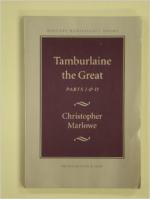|
This section contains 167 words (approx. 1 page at 400 words per page) |

|
Battenhouse, Roy W., Marlowe's "Tamburlaine": A Study in Renaissance Moral Philosophy, Vanderbilt University Press, 1964.
This book provides an analysis of the play as a didactic and conventionally religious moral statement, in which Tamburlaine is meant to be a figure of evil.
Eliot, T. S., "Christopher Marlowe," in Selected Essays, 1917—1932, Harcourt, Brace, 1932, pp. 100—07.
Eliot's discussion of Marlowe's style is one of the most influential modern critical evaluations of the dramatist, and it includes an analysis of the verse in Tamburlaine the Great.
Manz, Beatrice Forbes, The Rise and Rule of Tamerlane, Cambridge University Press, 1989.
Manz offers a useful historical account of the Mongol conqueror.
Ribner, Irving, "The Idea of History in Marlowe's Tamburlaine," in ELH, Vol. 20, 1954, pp. 251—66.
Ribner discusses Marlowe's classical sources in Tamburlaine the Great and argues that the play denies the role of providence in human history.
Rowse, A. L., Christopher...
|
This section contains 167 words (approx. 1 page at 400 words per page) |

|




